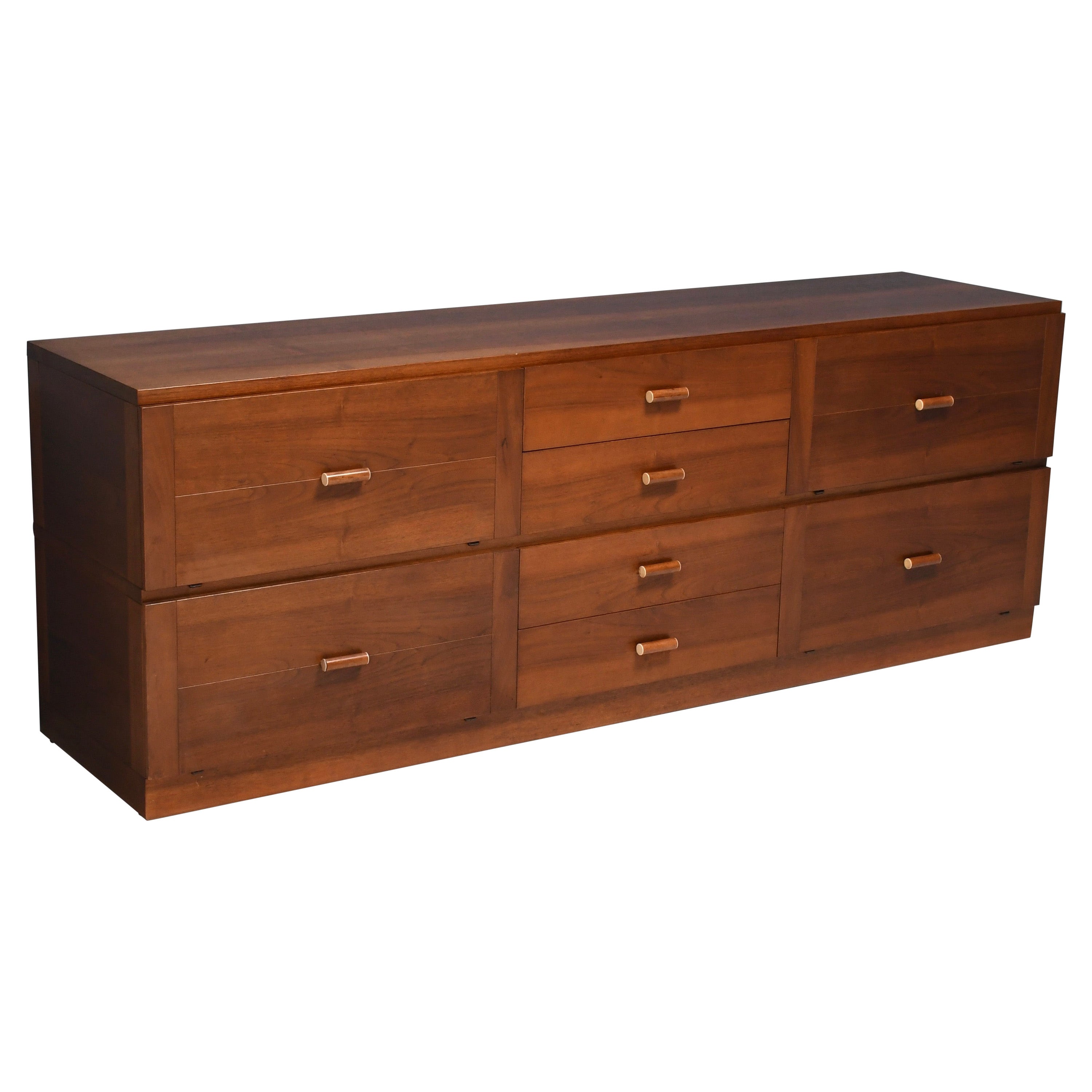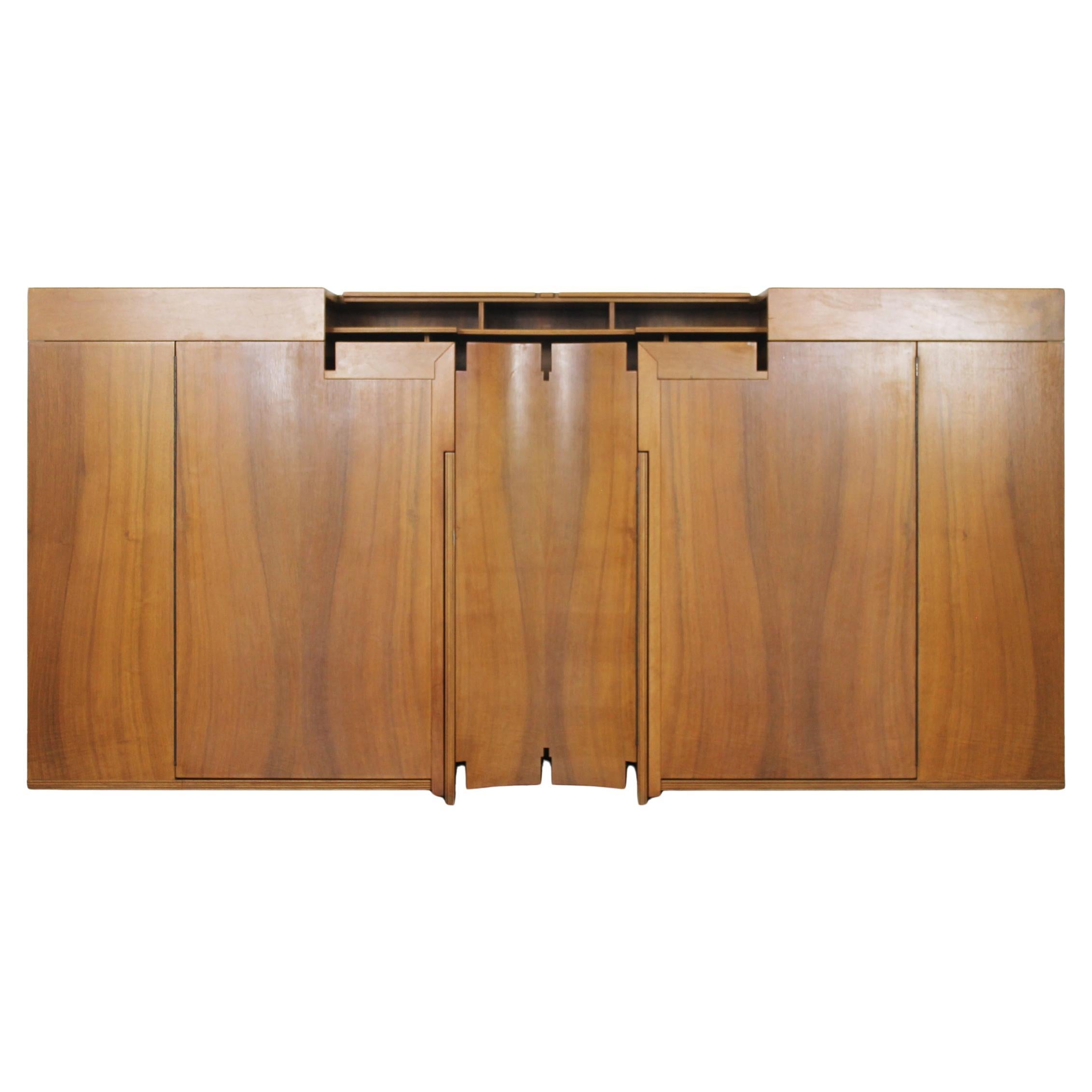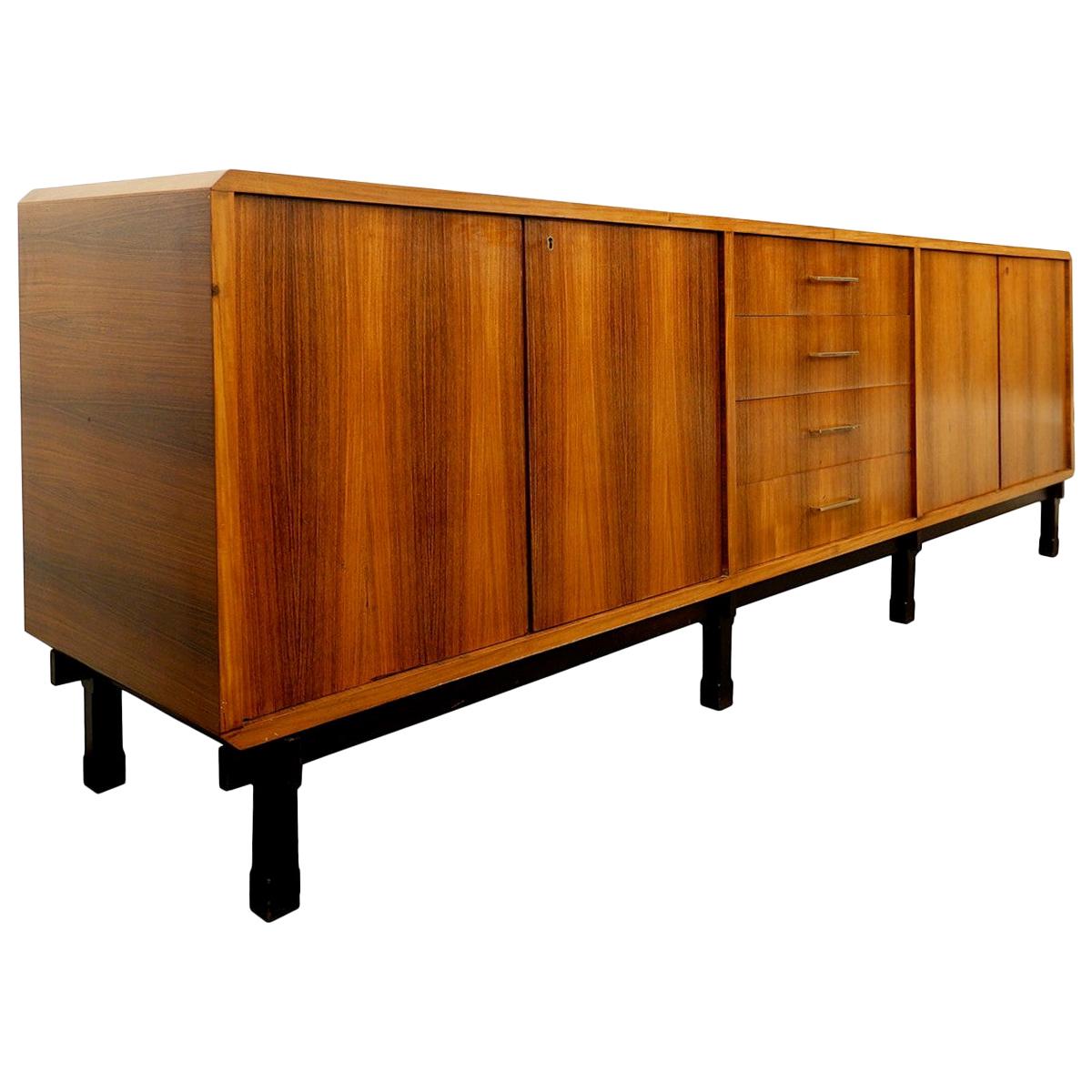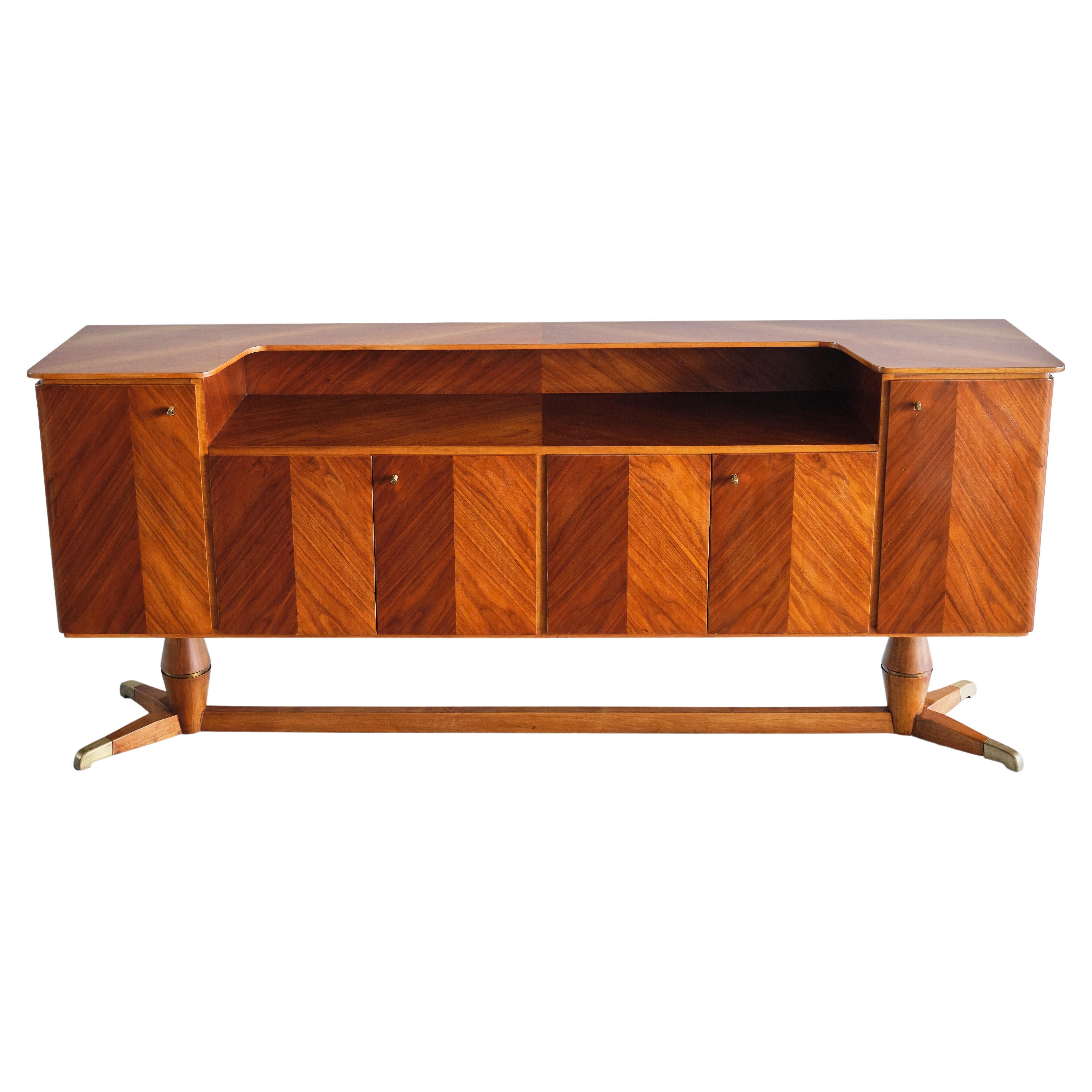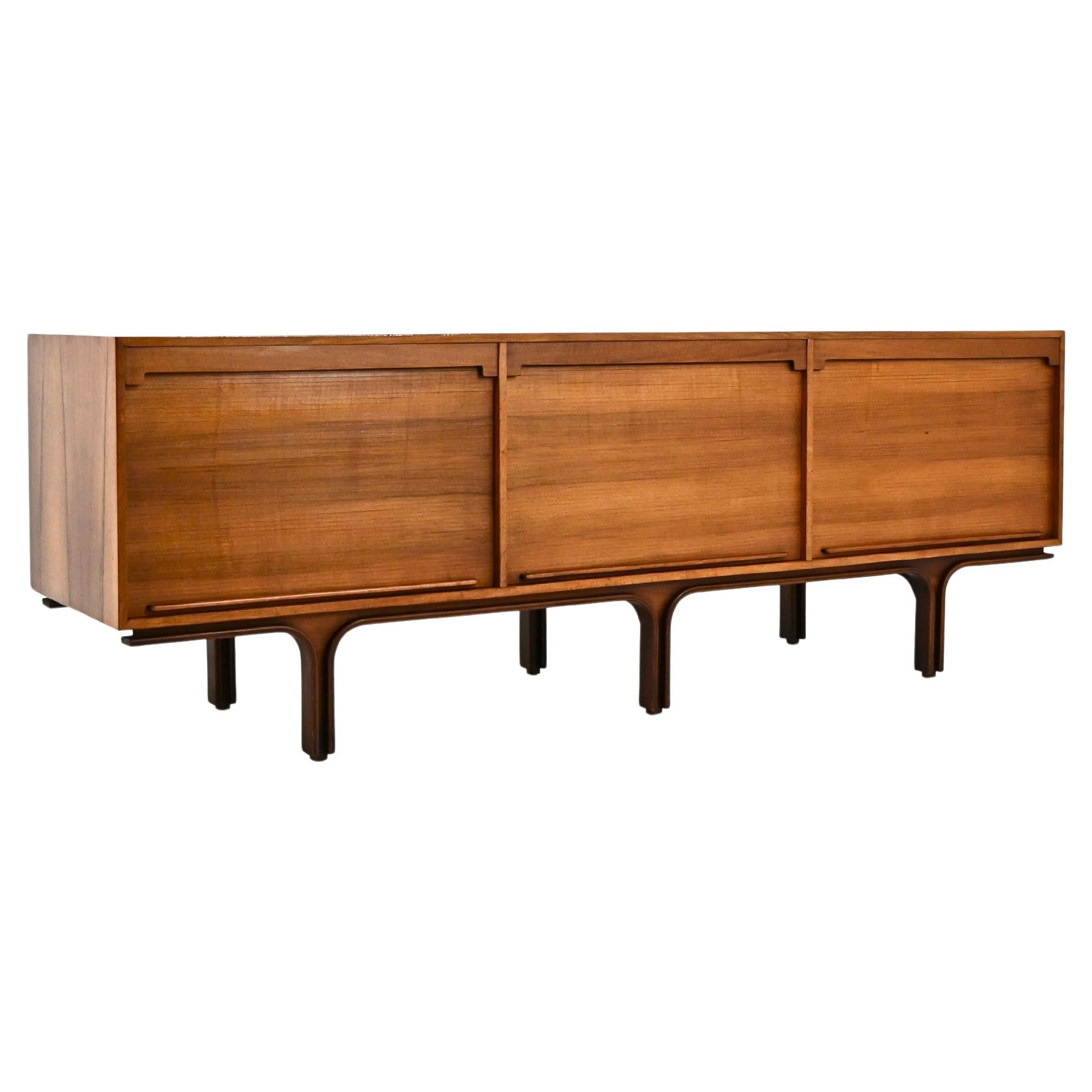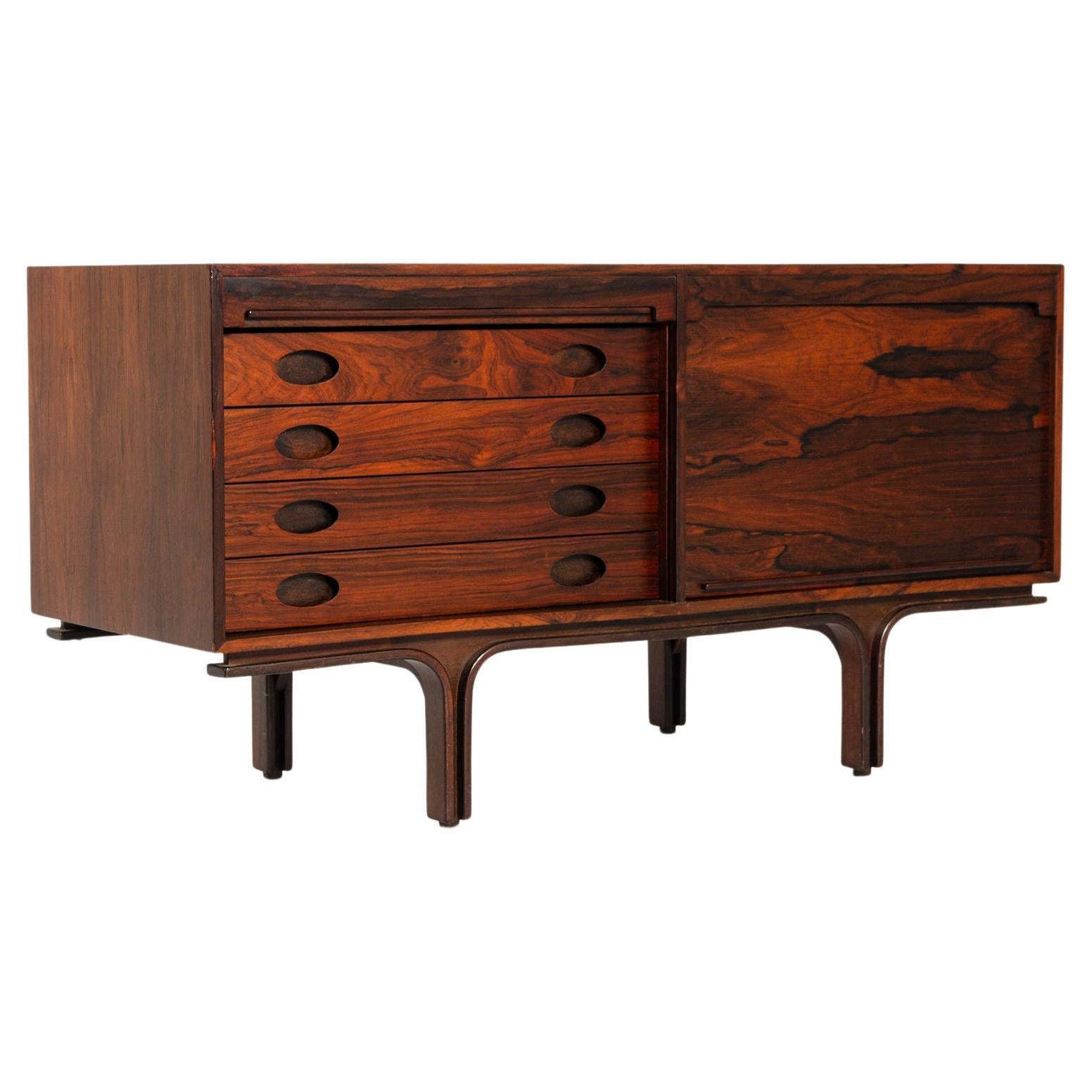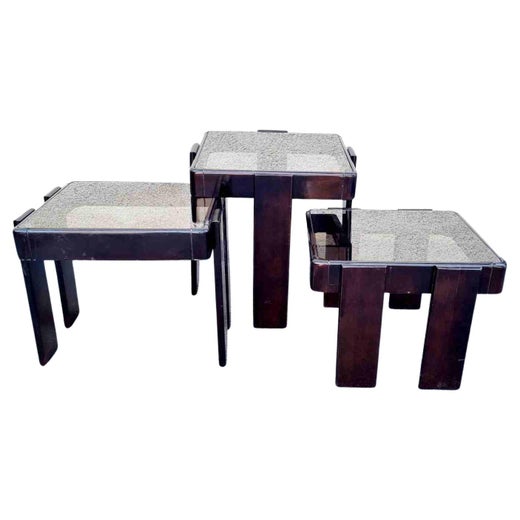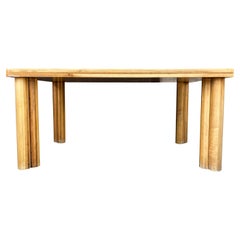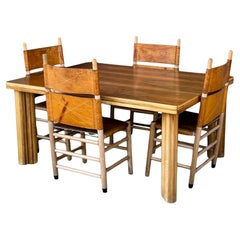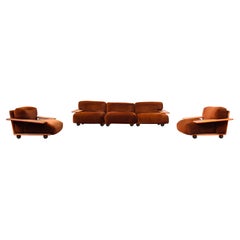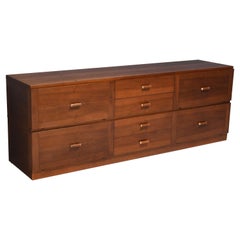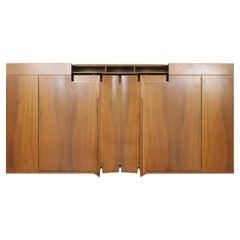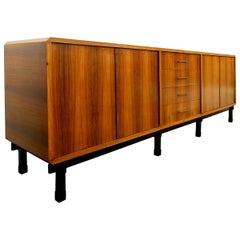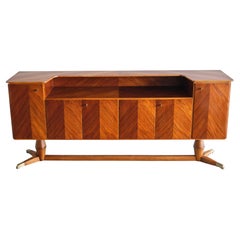Gianfranco Frattini Walnut 809/C “Ovunque” Sideboard for Bernini, 1981
About the Item
- Creator:Bernini (Manufacturer),Gianfranco Frattini (Designer)
- Dimensions:Height: 19.3 in (49 cm)Width: 64.97 in (165 cm)Depth: 23.63 in (60 cm)
- Style:Mid-Century Modern (Of the Period)
- Materials and Techniques:
- Place of Origin:
- Period:1980-1989
- Date of Manufacture:1981
- Condition:
- Seller Location:Vicenza, IT
- Reference Number:1stDibs: LU8019239254702
Gianfranco Frattini
Gianfranco Frattini is widely regarded as a mid-century master of Italian modern design. He was an award-winning architect and designer, and specialized in creating furniture and decor that is both decorative and practical — Frattini’s vintage desks, armchairs, nesting tables and other works are celebrated for their sophisticated merging of function and form.
Born in Padua in 1926, Frattini studied architecture at the Polytechnic University of Milan. He later apprenticed with his teacher and mentor, Gio Ponti. Through Ponti — arguably the most important figure in 20th-century Italian architecture and design — Frattini met many notable modernist designers such as Oscar Niemeyer and Le Corbusier, but an introduction to famed Italian entrepreneur Cesare Cassina would prove incredibly significant in helping launch his career.
During the mid-1950s, Frattini began to collaborate with Cassina’s eponymous company. He designed the brand’s acclaimed leather and walnut Model 849 lounge chair — a winner of the Compasso d’Oro award — the Marema nesting tables and the iconic Sesann collection. The latter, an enduring 1970s suite of impossibly welcoming leather-covered seating, is now produced by Tacchini. In addition to Cassina, Frattini created furniture and lighting for other manufacturers such as Bernini, Arteluce, Artemide, Knoll and more.
While many of his designs incorporate glass, tubular steel and other materials, Frattini loved working with wood. The sculptural Albero bookcase — an innovative floor-to-ceiling structure made in walnut that swings on a 360-degree vertical swivel axis — is a striking example of Frattini’s dedication to traditional woodworking techniques. In the early 1970s, he traveled to Japan with friend and collaborator Pierluigi Ghianda — a master Milanese cabinet maker — in order to study the work of artisans in Kyoto. The trip inspired his design of the Kyoto table, a work of solid beech with Canaletto walnut inserts that is part of the permanent collection of the Milan Triennale’s Design Museum. The Kyoto and Albero have been revived by Poltrona Frau.
Frattini’s designs are in the permanent collections of prestigious museums such as the Museum of Modern Art and the Cooper Hewitt, Smithsonian Design Museum.
Find vintage Gianfranco Frattini furniture, lighting and decor on 1stDibs.
- ShippingRetrieving quote...Shipping from: Vicenza, Italy
- Return Policy
More From This Seller
View AllVintage 1950s Italian Mid-Century Modern Shelves
Brass, Iron
Vintage 1970s Italian Mid-Century Modern Dining Room Tables
Walnut
Vintage 1970s Italian Mid-Century Modern Dining Room Tables
Leather, Plastic, Walnut
Vintage 1970s Italian Mid-Century Modern Sectional Sofas
Velvet, Foam, Walnut
Vintage 1960s Italian Mid-Century Modern Dining Room Tables
Walnut
Vintage 1960s Italian Mid-Century Modern Coffee and Cocktail Tables
Walnut
You May Also Like
20th Century Italian Minimalist Sideboards
Walnut
Vintage 1980s Italian Mid-Century Modern Sideboards
Walnut
Mid-20th Century Italian Mid-Century Modern Sideboards
Wood
Vintage 1940s Italian Mid-Century Modern Sideboards
Brass
Vintage 1960s Italian Mid-Century Modern Sideboards
Wood
Vintage 1960s Italian Modern Sideboards
Rosewood, Down
